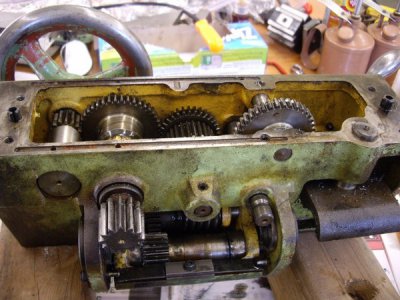- Joined
- Jul 26, 2013
- Messages
- 584
Hello all,
I bought this lathe a couple of years ago and within the last few months, the cross-feed has pretty much stopped working or is very jumpy at best. The lathe is a 1967 gap bed model.
Here's a picture of the lathe...
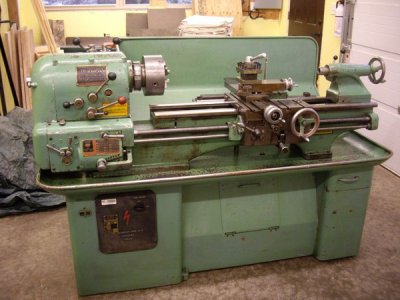
I have managed to remove the compound, cross-slide and taper attachment from the saddle, as well, I have pulled both the feed rod and leadscrew and then dropped the apron. I realize that it wasn't necessary to remove the compound and cross-slide, but I figured that while I was at it I might as well. I will also remove the saddle and make sure that there aren't any trapped chips underneath.
Here's a couple of pics of the apron assembly...
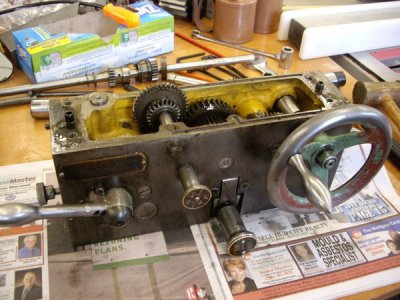
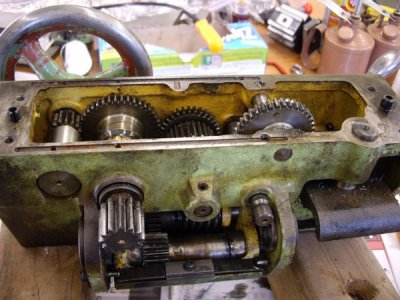
This last picture is of the apron wormbox...
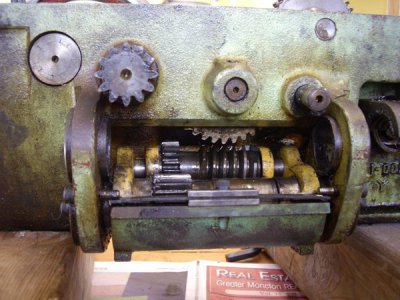
When engaging the cross-feed, there is a jumpy movement of the wormbox, so I'm suspecting that the problem lies in there. But upon an inspection of the gears and the movements of them, nothing stands out at all. There aren't any missing or chipped teeth, although the pinion gear in the wormbox shows some wear, but not excessive in my opinion.
There are some springs and adjusting screws in the wormbox shaft, but I think that the adjustment is for the kick-out.
Does anyone have any ideas... ?
Cheers...
Brian
I bought this lathe a couple of years ago and within the last few months, the cross-feed has pretty much stopped working or is very jumpy at best. The lathe is a 1967 gap bed model.
Here's a picture of the lathe...

I have managed to remove the compound, cross-slide and taper attachment from the saddle, as well, I have pulled both the feed rod and leadscrew and then dropped the apron. I realize that it wasn't necessary to remove the compound and cross-slide, but I figured that while I was at it I might as well. I will also remove the saddle and make sure that there aren't any trapped chips underneath.
Here's a couple of pics of the apron assembly...


This last picture is of the apron wormbox...

When engaging the cross-feed, there is a jumpy movement of the wormbox, so I'm suspecting that the problem lies in there. But upon an inspection of the gears and the movements of them, nothing stands out at all. There aren't any missing or chipped teeth, although the pinion gear in the wormbox shows some wear, but not excessive in my opinion.
There are some springs and adjusting screws in the wormbox shaft, but I think that the adjustment is for the kick-out.
Does anyone have any ideas... ?
Cheers...
Brian


